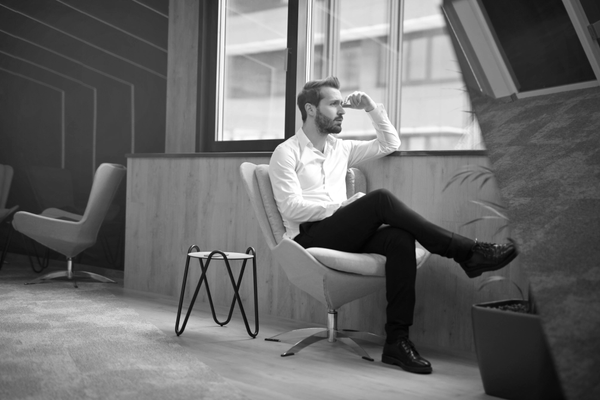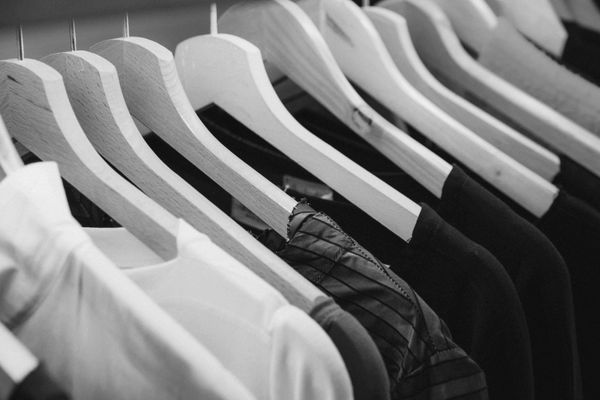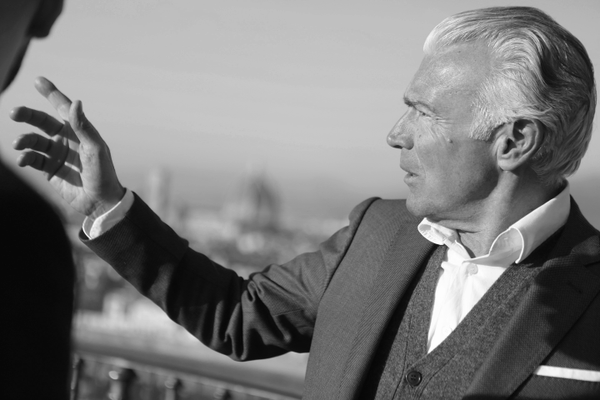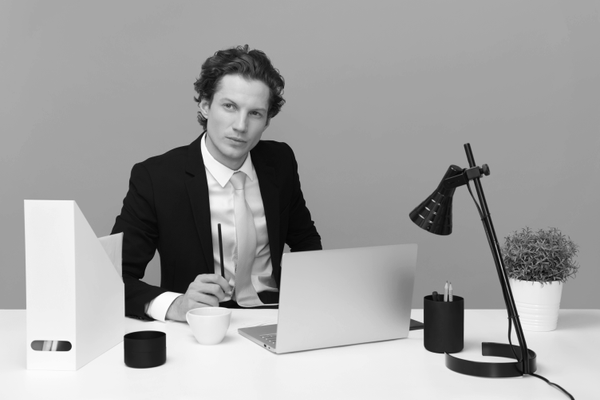Navigating the ambiguous territory of business casual attire can often be perplexing. This dress code, prevalent in numerous professional environments, frequently leaves room for interpretation, making it a challenging code to crack. With over a decade of experience in men's fashion, this exploration delves into the nuanced world of business casual, offering a clear understanding of its requirements and how to effortlessly achieve a polished yet approachable look.
Decoding Business Casual: What Does It Really Mean?

Navigating the realm of business casual attire can be a daunting task, given its inherent ambiguity. As a men's wear stylist with over a decade of experience, I've encountered the diverse interpretations of business casual across different workplaces and events. So, what exactly does business casual entail?
Understanding the Vague Nature of Business Casual
Business casual is an elusive dress code that often confounds even the seasoned professional. Its definition varies widely depending on industry, company culture, and even geographical location. The ambiguity stems from the combination of "business" and "casual," terms that seemingly oppose yet blend to form a style that is neither too formal nor too lax. The challenge lies in finding that perfect middle ground where one looks neither underdressed for a board meeting nor overly formal for a casual Friday.
Digging Deeper: The concept of business casual evolves over time and differs vastly across industries. For instance, what passes as business casual in a Silicon Valley tech company might be too casual for a New York law firm.
Example: At a tech startup, a typical business casual outfit could be a pair of neat, unripped jeans paired with a plain, well-fitting t-shirt, a casual blazer, and clean sneakers.
Strategies for Deciphering Business Casual
To navigate the murky waters of business casual, consider these practical strategies:
- Observe and Adapt: Observing the dress habits of coworkers and leaders in your workplace is crucial. This approach allows you to visually benchmark the norms and adjust your attire accordingly. Remember, erring on the side of slightly more formal is safer, particularly when starting a new job or attending a significant meeting.
- Seek Clarification: Directly inquiring about the dress code from your boss, HR, or event host can provide clear guidelines. This proactive approach shows your commitment to professionalism and ensures you avoid potential missteps. Asking about attire is not a faux pas; rather, it shows diligence and respect for workplace norms.
Example: Before your first day at an advertising agency, you might ask HR about the office dress code and learn that employees usually wear chinos with button-downs or smart polos, allowing you to prepare appropriately.
Case Study: An analyst at a financial services firm noticed that more senior colleagues often wore smart blazers and quality shoes. Inspired, he upgraded his wardrobe incrementally, aligning his style more closely with these role models. His updated appearance contributed to a more professional image, which was a factor in his promotion within two years.
Building a Versatile Business Casual Wardrobe

Modern Office Environment: Creative Business Casual
In dynamic fields like technology and marketing, the dress code often leans towards "creative business casual" or "smart casual." This style permits a blend of formal and relaxed elements—think blazers with chinos or an Oxford shirt paired with jeans. Sneakers, while once a fashion taboo in offices, are now increasingly accepted in many creative and tech workplaces, reflecting a shift towards more versatile and personality-driven attire.
Digging Deeper: As workplaces become more digital and roles more dynamic, the line between personal and professional attire blurs, allowing more self-expression through fashion while still maintaining a professional appearance.
Example: A software developer might wear a tailored knit sweater, a collared shirt underneath, dark jeans, and leather sneakers to the office, striking a balance between comfort and professionalism.
Relaxed Aesthetic: Casual Business Casual
For industries that are less formal or for startups that champion a culture of comfort and individuality, the dress code can be more relaxed. Here, business casual may include polo shirts or even tastefully branded t-shirts paired with jeans or durable chinos. Footwear like chuckaboots or clean, unobtrusive sneakers can complement this laid-back style, suitable for environments that value practicality and innovation over traditional business attire.
Digging Deeper: In environments that prioritize functionality and comfort, employees might find that their attire can shift more towards casual elements, reflecting a company culture that values innovation and a relaxed approach to work.
Example: At a startup, it's not uncommon to see the CEO in a branded polo, premium denim jeans, and stylish chukka boots, embodying the company's casual yet ambitious ethos.
Footwear Essentials for Business Casual
Choosing the right footwear can make or break your business casual look. Essential choices include leather-lined dress oxfords and suede chuckaboots, both of which offer a polished yet not overly formal appearance. Brands like Bruno Mark, known for their balance of quality and affordability, provide stylish options that fit well within most business casual guidelines. Always opt for shoes that offer comfort and style, ensuring they complement the overall tone of your workplace's dress code.
Digging Deeper: The appropriate footwear not only complements your outfit but also enhances comfort, crucial for productivity. In modern workplaces, the shift towards stylish yet comfortable shoes reflects broader trends in workplace culture focusing on employee well-being and performance.
Example: A mid-level manager in a finance firm might opt for Bruno Mark leather oxfords to pair with chinos and a light cashmere sweater, ideal for client meetings and regular office days alike.
Case Study: A marketing manager upgraded to more stylish shoes, which noticeably boosted his confidence during presentations. This enhancement in his professional appearance positively impacted his career trajectory, accelerating his prospects for advancement.
By understanding these nuances and adopting a flexible approach to your wardrobe, you can confidently navigate the business casual dress code and make a positive impression in any professional setting.
Crafting the Perfect Business Casual Outfit

To ensure you ace your business casual attire, here are a few key tips to keep in mind:
- Neutral Colors: Stick to neutral hues for a cohesive and versatile wardrobe.
- Minimal Patterns: Opt for subtle patterns or solid colors to maintain a professional yet relaxed aesthetic.
- Essential Pieces: Invest in button-down Oxford shirts, blazers, crew neck sweaters, and chinos for a well-rounded wardrobe.
By incorporating these foundational pieces and adhering to the principles of business casual dressing, you can confidently navigate the nuances of workplace attire while showcasing your personal style.
Elevating Your Business Casual Look

To elevate your business casual outfits, consider the following styling tips:
- Quality Accessories: Opt for minimal and versatile accessories like a classic wristwatch or a sleek metal cuff.
- Footwear Selection: Choose dress shoes like Oxfords or loafers for a polished finish, or opt for suede chukka boots for a rugged yet refined look.
- Balanced Approach: Strike a balance between casual and formal elements, ensuring that each piece complements the overall ensemble.
By paying attention to details and curating a wardrobe that aligns with the nuances of business casual attire, you can confidently navigate the professional landscape while showcasing your sartorial prowess.
Conclusion

Mastering the art of business casual dressing is a skill that can set you apart in the workplace. By understanding the nuances of this dress code, investing in quality wardrobe essentials, and incorporating personalized touches into your outfits, you can exude confidence and professionalism in any professional setting. Remember, when in doubt, it's always better to err on the side of sophistication and refinement.
Next Steps: Take inventory of your current wardrobe and identify any gaps in your business casual attire. Consider incorporating versatile pieces that can be mixed and matched to create a range of stylish ensembles. Share your favorite business casual tips and outfits on social media—LinkedIn, Twitter, and Facebook— to inspire others on their style journey.
